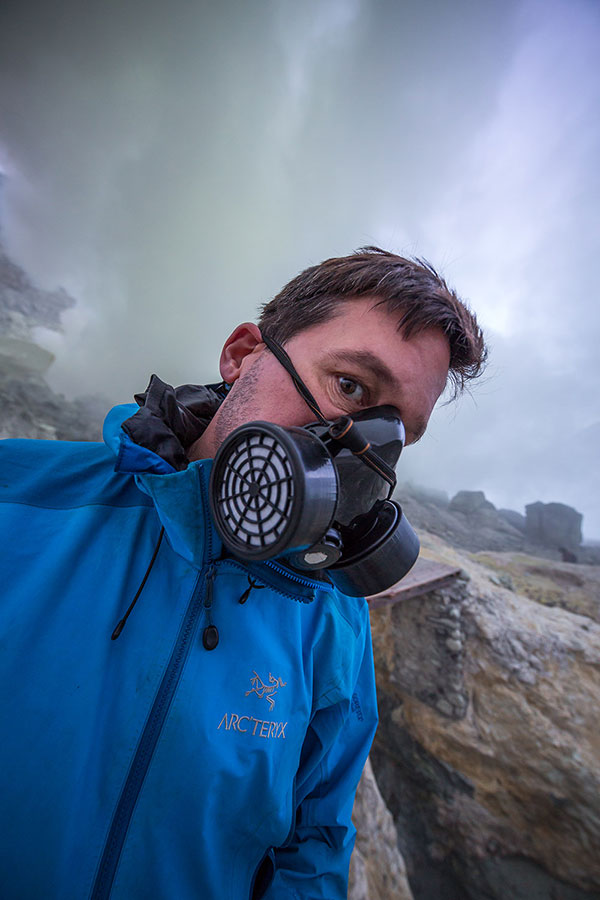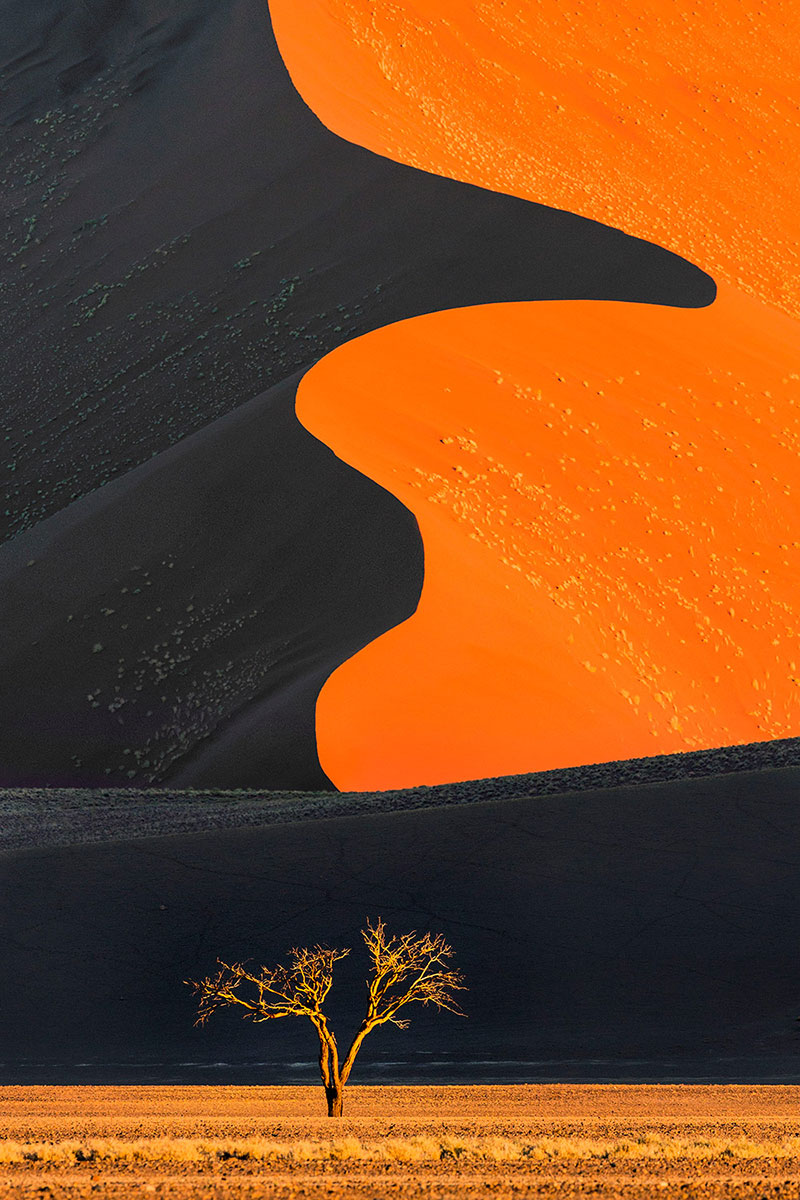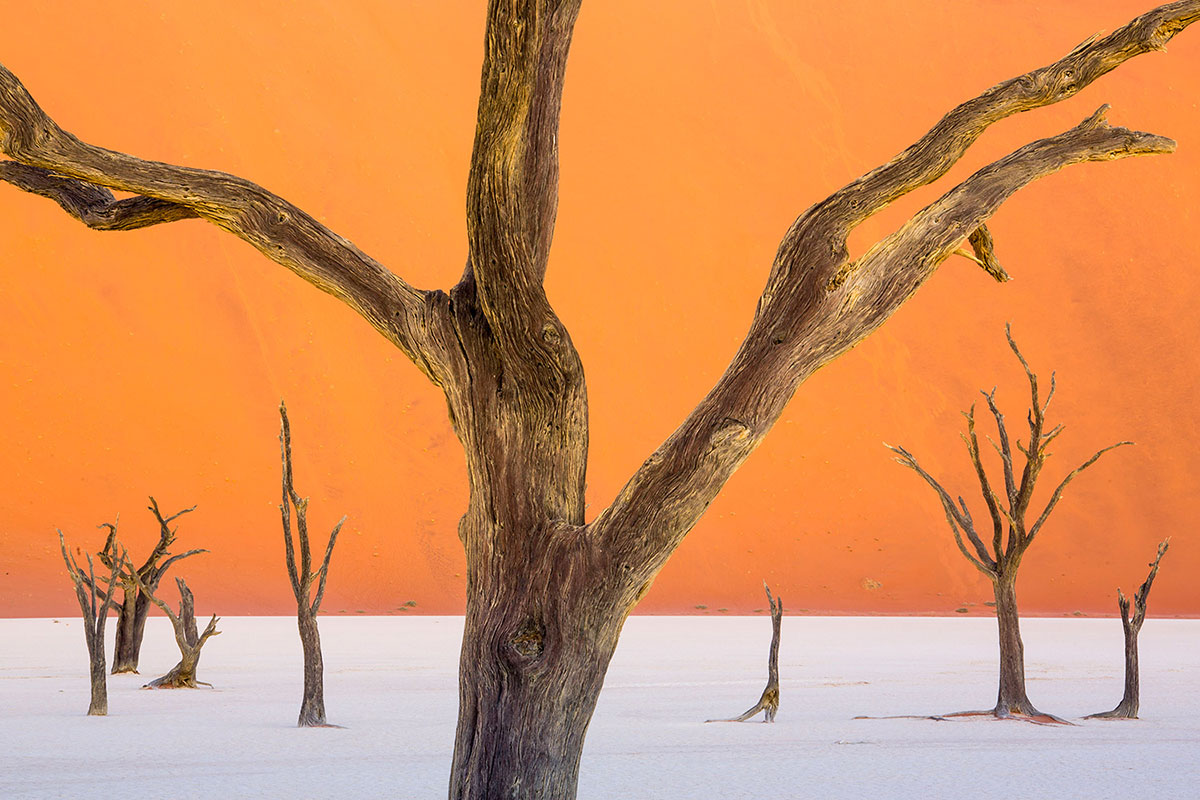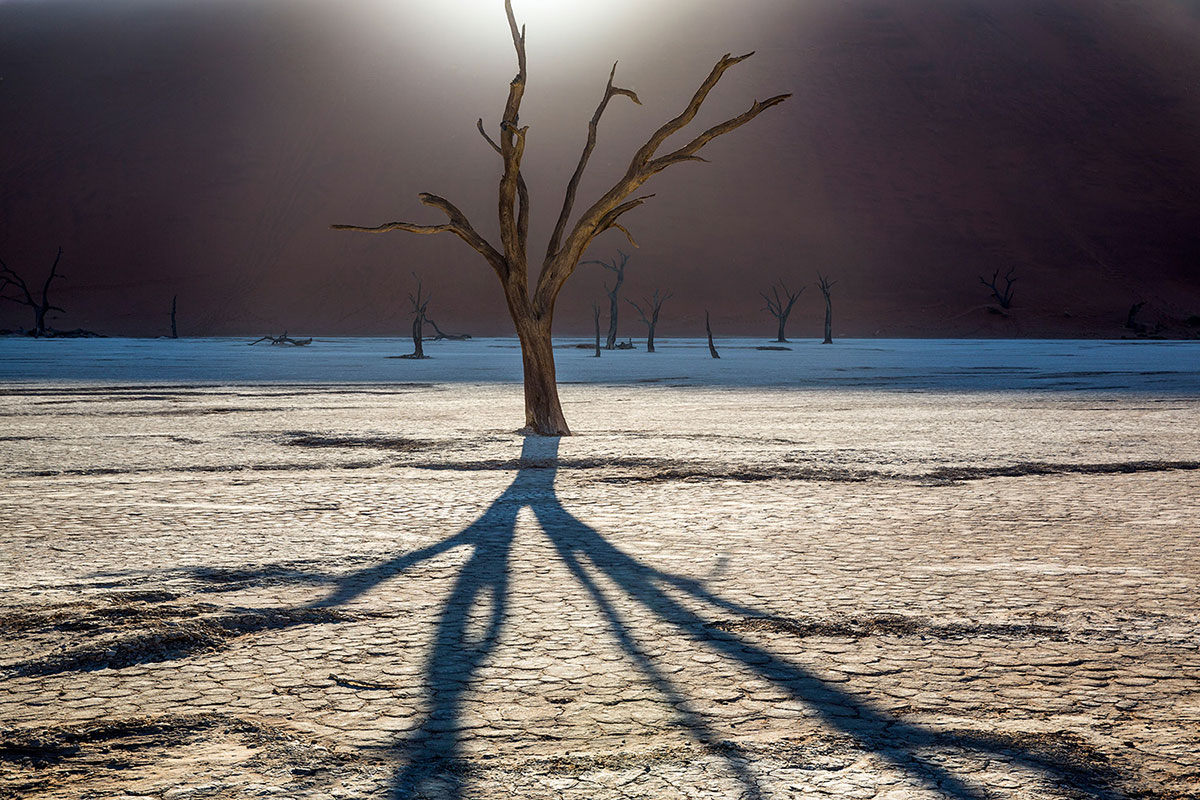Namib-Naukluft National Park is a national park in Namibia, protecting part of the Namib Desert (considered the oldest desert in the world), and it is the largest game park in Africa. The most well known area of the park is Sossusvlei, which contains the tallest dunes in the world, in places rising more than 1000 feet above the desert floor. The dunes are also remarkable because of their reddish-orange color, the result of oxidization of iron in the sand; the oldest dunes have the boldest colors.
The easiest shooting is done from the road leading into the dunes, using a telephoto perspective to close in on interesting patterns and details. Strong sidelighting at sunrise or sunset best reveals the curving shapes of dune crests. I zoomed in tight to isolate a discrete portion of the overall landscape in the photo below.
Although I enjoy the views from down below, I much prefer the photo opportunities from the tops of the dunes. For the photo below, I climbed several hundred feet up a massive dune in order to get a dizzying perspective. Using an ultra-wide angle lens, I pointed my camera down and excluded the featureless sky. As the sun set, the deeply rippled sand formed shadows, which created lines powerfully leading the eye from foreground to background.
One of the most photogenic places in Sossusvlei is known as Deadvlei, a white clay pan with dozens of dead tree. Its name means “dead marsh,” and it used to be wet, allowing camel thorn trees to grow. Approximately 600 to 700 years ago, the water dried and the trees died. The dead trees are not petrified, but because of the dry desert air, the wood has not decomposed. Deadvlei is surrounded on all sides by tall dunes, creating a perfect backdrop to the dead trees blackened by the sun. For this image below, I used a short telephoto zoom to isolate a pattern of dead trees against the orange sand of a steep dune in the background.
The photo opportunities in Deadvlei are varied, changing with the light. For this final shot below, the sun was rising just above the dune in the background. I used the resulting flare creatively, taking care to shade the lens from too much stray light, allowing just enough in to highlight the top of the tree.
Namibia is a fantastic and beautiful country, and Namib-Naukluft National Park is just one of many incredible photo locations. You can see more of my Namibia photos on my website at: Dreamscapes – Namibia.
About the author: World-renowned professional photographer and Tamron Image Master Ian Plant is a frequent contributor to several leading photo magazines and the author of numerous books and instructional videos. You can see more of Ian’s work at www.ianplant.com. Have something to add to the story? Leave a comment or email editor@outdoorphotographyguide.com. 

Share tips, start a discussion or ask one of our experts or other students a question.
Already a member? Sign in
One Response to “Namib-Naukluft National Park, Namibia”
Premium Membership
Unlock exclusive member content from our industry experts.
- 24/7 Access to Premium Photography Videos, Tips, and Techniques
- Step-by-Step Instructional Demos and Guides
- 50% Off Video Downloads Purchased in the Outdoor Photography Guide Shop
- Access to Ask the Expert Program
Unlock exclusive member content from our industry experts.
- 24/7 Access to Premium Photography Videos, Tips, and Techniques
- Step-by-Step Instructional Demos and Guides
- 2 Full-Length Video Downloads to Watch Offline
- 50% Off Video Downloads Purchased in the Outdoor Photography Guide Shop
- Access to Ask the Expert Program
Gold Membership
$463 Value
Get everything included in Premium plus exclusive Gold Membership benefits.
- 24/7 Access to Premium Photography Videos, Tips, and Techniques
- Step-by-Step Instructional Demos and Guides
- 8 Full-Length Video Downloads to Watch Offline
- 2 Full-Length Photography Classes to Keep for Life
- "How to Shoot Creatively" Educational Track
- Discounts on Purchase-to-Own Content in the Outdoor Photography Guide Shop
- Access to Ask the Expert Program
- Exclusive GOLD LIVE Streaming Events




How did you shade your lens from the rising sun in the Deadvlei picture above ?